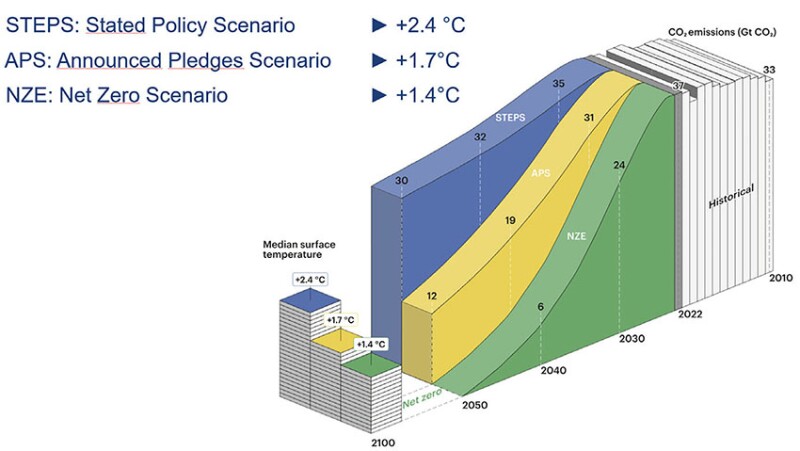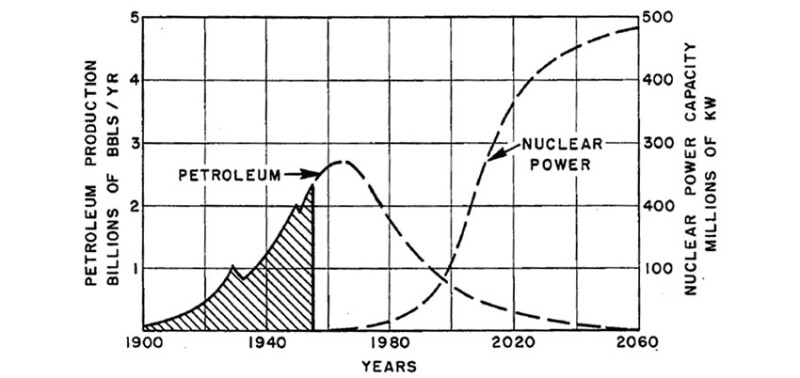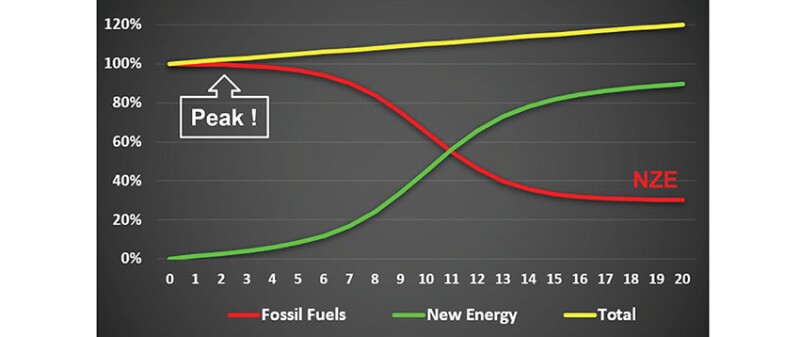Editor’s Note: This is a summary of the October episode of the President’s vodcast. We encourage you to watch the episode to see the full conversation. In this vodcast, Houzé discusses his views on SPE and the energy transition.
Last month, I presented a to-do list with five main topics: energy transition, finances, governance, membership, and quality.
This month, I will discuss the first topic, energy transition.
1. SPE’s polarized views on energy transition
As I mentioned last month, there are significant geographic contrasts within our industry and SPE regarding how the energy transition is perceived and developed. In some SPE venues and regions, energy transition is the dominant, if not the only subject, and the P in SPE is indeed a major obstacle for support, even from our traditional stakeholders.
In other regions, stakeholders acknowledge the energy transition, but the situation is essentially business as usual. Major investments are underway to sustain production at current levels or even increase hydrocarbon production to record levels, with development plans spanning over several decades. Even in these regions, most, if not all, new projects are designed from the outset to have a low carbon footprint, including mitigating methane emissions. Energy transition is somehow factored in.
So, there are very different narratives, which are reflected in a polite but real polarization within SPE—geographic and, occasionally, demographic. As an SPE President visiting many sections and stakeholders, the contrast is often striking.
But we are engineers operating on the same planet, and there must be a single energy narrative that accounts for the reality of the energy transition in whatever form or definition this takes, locally or globally. To do this, we can try to assess in the most objective way possible how our license to operate may evolve in the short to medium term.
I will start with something you may have seen many times: the three main energy transition scenarios presented by the International Energy Agency (IEA).
These scenarios predict the climate impact by the end of the century based on current and predicted variables, including consumption, population, economics, and technologies. These are just models, but as the statistician George Box pointed out: “All models are wrong, but some are useful.” These IEA models are definitely useful (Fig. 1).

For those unfamiliar, allow me to elaborate:
- The STEPS scenario corresponds to the formal commitments of the Paris Agreement of COP21 in 2016.
- The APS scenario reflects the announced commitments from governments if we take their words for granted.
- The NZE scenario assigns a target of net-zero emission by 2050, forcing this constraint on the models.
This is CO2, not oil and gas, but one can imagine that our license to operate oil and gas and our possible contribution to energy transition will highly depend on the scenario that most societies end up following.
Picking one of these scenarios, or anything else, can be anybody’s guess, which may be skewed by self-interest, ideology, or fear of the future. However, as engineers, we should be able to objectively pick a ‘P50,’ acknowledging that we are very likely to face a very high standard deviation.
2. Historical perspective of energy transition(s)
Looking at the past does not guarantee what will happen in the future, but it can offer useful pointers. So, let us do just that.
You may believe the term “energy transition” was initiated by a government body, an activist group, or academia. This is wrong. The origin of the term is well hidden.
If you ask ChatGPT, “What is the origin of the term energy transition?”, it will point to the energy crises of the 1970s, the realization of fossil fuels’ vulnerability, and then a growing recognition in the 1990s of climate change, highlighting the need for an “energy transition” from fossil fuels to sustainable energy resources.
However, if you ask ChatGPT, “Was the term ‘energy transition’ used in the 1950s related to nuclear energy?”, it will confess that it has lied a bit by omission.
In reality, the term was introduced in the 1950s in the context of a lobbying action by the nuclear energy industry. The idea was to convince the US government to heavily subsidize the next generation of nuclear power plants to initiate an "Energy Transition" from oil and gas to nuclear to replace oil and gas in the perspective of peak oil (Fig. 2).

M. King Hubbert, who coincidently is an SPE Honorary Member, introduced the notion of peak oil in the 1950s. Hubbert predicted “peak oil” to take place in the US in 1970. This was not related to climate change but to the expected permanent depletion of oil reserves.
A second graph from the same paper (Fig. 3) illustrated that, in the grand scheme of human history, fossil fuels would be necessary but short-lived before virtually unlimited nuclear power would take over. Interestingly, back then, fossil fuels and nuclear energy were not considered to have moral implications as they are today.

This is where the term energy transition originated.
For orientation, the two transition curves in Fig. 4, the descending petroleum curve starting from the peak and the ascending nuclear curve, are defined as “logistic diffusion” curves. What follows is a short mathematical orientation (sorry, it’s the way I’m wired) on these relations before proceeding to other aspects of energy transition.

Energy transition is generally presented using logistic diffusion curves, developed in the mid-19th century. These curves represent the evolution of the distribution between “old” and “new” from the time of the inception of the new to the eventual termination of the old.
The simplest logistic diffusion curves, shown below, account for the total replacement of the old by the new in the context of a stable demand. These worked very well for technological breakthroughs, like the replacement of horse carriages by combustion engine cars in the early 20th century.
The Intergovernmental Panel on Climate Change (IPCC) also uses these logistics diffusion curves to model energy transition. The next one is slightly more complex, accounting for only a partial replacement in the context of growing demand. This is what we could expect if the IEA net-zero scenario is followed (Fig. 5).

In this scenario, you will notice that the peak of fossil fuel demand should occur at the beginning of the transition, which would mean now.
Back to today’s energy transition, the IPCC states in its latest report that the transition from fossil fuels to sustainable energy will be like the previous transitions but faster. Fig. 6 illustrates this, showing a transition from biomass to coal over 120 years and a transition from coal to oil and gas over 50 years.

However, these graphs are misleading at best because they show the energy mix in terms of percentages, without showing the overall growth of our energy needs during the same transition periods.
The story looks very different when considering absolute energy consumption, as shown in Fig. 7. The most important observation in this graph is that in the history of humankind, the consumption of any energy source has never decreased. This observation even applies to animal and human muscle energy (not shown here). For example, peak coal consumption did not occur at the beginning of the transition to oil and gas in the 1920s. The record consumption of coal was in 2023, even if the growth rate is slowing. The same applied to wood in 1860. It is observed for oil and gas now.

Historically, energy transitions have never been about substitution. These transitions have always been about aggregation: the old energy source continued to be steadily consumed, or even increased, while the new energy source entered its growth and eventual dominance phase (J.B. Fressoz, 2022).
Historically, old sources of energy have always been used to boost new sources in the early stages of their development, until in turn new sources were used to improve the production of old sources, creating a complex and interdependent energy mix.
There are many historical and present illustrations of this process, but here I show only one. This is a photo of the main Ford Model-T factory in the 1930s (Fig. 8). We can see that half of the land area of the factory was occupied by mineral stocks, and the largest stock was coal by far.

In the 1930s, 7 tons of coal were needed to build a Model-T Ford, more than the weight of the gasoline this car would consume over its operational life. Even today, it takes 2 tons of coal to build a mid‑size electric car in China (J.B. Fressoz, 2022).
There are many other historical and current examples, from wood to lithium, that illustrate the evolution of different sources of energy and their resulting interdependence within the energy mix.
But enough history, let us switch back to the present situation and our short- to medium‑term future.
3. Selecting a P50 for our license to operate oil and gas
To those who believe that SPE should take a side in the energy transition debate, please be reminded that SPE is a US-registered 501(c)(3) not-for-profit professional organization. Specifically, SPE is not permitted to lobby. In theory, this lobbying restriction only applies to US politics, but in practice, SPE has consistently refrained from any lobbying. I believe this nonpartisanship is essential for the credibility of a technical society, and this will remain this way unless, or until, we change our bylaws.
Our action starts with the license to operate delivered by our society to our stakeholders. Ultimately, if one day our Society asks us to close shop “for the greater good,” so be it! This is very unlikely, but in any case, it is not our mission to be part of this discussion in general, and certainly not now. We just have our work to do.
However, as SPE, we must take a cold, hard look at what this license to operate is likely to look like in future scenarios and which scenario is the most likely. This is required to get organized, refine our mission, adjust our strategic plan(s), and provide realistic perspectives to our younger generation of engineers.
We revisit the three IEA scenarios (STEPS, APS, and NZE) and view them in terms of the anticipated consumption of oil, gas, coal, and renewables (Fig. 9). STEPS is the only scenario that anticipates the relative stability of oil and gas productivity. Only coal production is expected to decline eventually, whatever the scenario.

While not defending any scenario, one would have to acknowledge that STEPS, or a variation of it, is the most likely scenario as it is a convergence of many elements, including
- The history of past energy transitions.
- All current indicators (economic, security, reliability, etc.).
- The economic burden of the other two scenarios is not currently addressed in any realistic plan.
- The undeniable need for affordable energy in emerging countries to grow without paying a climate debt they have not, to date, contracted.
The idea is not to cherry-pick a preferred scenario. STEPS is just the most likely case. But it is only a P50, and we know the future energy mix will be a moving target. It will be affected by how the climate crisis evolves, whether our current climate models turn out to be pessimistic or optimistic, by future geopolitical developments, global and regional economics, technical breakthroughs, etc.
STEPS is also interesting in this scenario in that it explains, at least partially, the divergence in the graphs in Fig. 10 between developed and emerging countries in terms of their energy mix.

The STEPS scenario combines a substantial and logical reduction of oil and gas in developed countries, compensated for by increased consumption in emerging countries (which is more fact than logic).
This concept is amplified by a strong rejection of oil and gas in developed countries lacking oil and gas culture. In addition, many developed countries are expected to exceed the STEPS scenario’s objectives, magnifying this contrast.
Beyond 2050, the anticipation is a decline of around 50% for oil and 25% for gas in the following 20 years. The one thing everybody agrees on is that no one really knows.
4. Why is oil and gas so resilient?
At this stage, I am thinking about those who may read this column, watch this month’s vodcast, or read similar columns elsewhere while not knowing much about our industry and SPE.
They may think that the anticipation of 25 more years of stable production looks very much like a self-serving narrative wrapped in static economic realism. They may not understand why it is taking so long for oil and gas to be replaced by something else, and they may attribute this inertia to many, possibly wrong, reasons.
So, why can we not phase out oil and gas much faster if we really want to?
There are probably many factors to explain the situation, but principally it is that oil and gas are irreplaceable, at least in the medium time frame (i.e., over the next 25 to 50 years).
Don’t take my word for it. Listen to Vaclav Smil, a world-class expert on energy who does not especially like nor dislike our industry, but who always had a pragmatic approach to energy problems. The following is not a direct quote but a request to ChatGPT to summarize Dr. Smil’s view of oil and gas relative to future energy scenarios. It is consistent with what I read in his books, which I highly recommend.
“Many who advocate for replacing oil and gas overlook the fact that these fuels are highly desirable, widely available, relatively low cost, energy-dense, easily transportable, and versatile. They provide a multitude of benefits to society.
In the past century, they have greatly reduced human labor by providing cheap and efficient energy. This has led to increased productivity, reduced physical strain, and improved living standards.
There are still few substitutes that can match their performance and cost-effectiveness. Until such alternatives are developed and become widespread, oil and gas will likely remain crucial components of the global energy mix.”
5. Extension of SPE’s mission in the context of energy transition
We have covered one side of energy transition and its expected impact on the evolution of our license to operate oil and gas. The other side is the extension of our technical boundary(s) in the context of additional subsurface activities, which have progressively added to our mission in the context of energy transition.
There can be many ways to structure and map the different components of SPE’s present and future mission. The one suggested in Fig. 11 shamelessly plagiarizes the tagline of a major service company. In the long run, the development of SPE will be based on three pillars: Core, Low Carbon, and New Energy.
- Core—includes our historic activity of the exploration and production of oil and gas. Beyond production, it also includes classic gas storage.
- Low Carbon—or decarbonization in Europe, includes the mitigation of the direct greenhouse-gas emissions of our own industry, and the removal of CO2 via CCUS.
- New Energy—or deep subsurface new energy if we want to be more accurate, the subset of sustainable energy where we bring unique capabilities to the table, either by direct production or by processes that assist, in one way or another, this production.

All these activities have a single common denominator: we are manipulating fluids in the deep subsurface and we have owned this space for more than 150 years.
As a reservoir engineer, I would formulate it as follows: whenever Darcy’s law or a nonlinear variant applies, this is our territory. Of course, it is not just about reservoir engineering; the notion of subsurface in this context involves all disciplines, including surface operations, addressed by SPE and its sister societies.
For our core mission of oil and gas we have reasonable expectations and understanding of possible oil and gas scenarios, but in truth, the same applies to the rest of our mission, whether low-carbon or new-energy activities.
For low carbon, reducing our direct emissions will, in the short term, determine our license to operate. In contrast, the future of carbon storage will largely be determined by the ability to safely store CO2 in underground reservoirs, as well as the political and economic aspects associated with these processes. One unknown will be the public acceptance and the ability to scale CCUS in the wider context of carbon dioxide removal (CDR).
Similarly, our deep subsurface new-energy activities (geothermal, H2 storage, critical minerals) will be determined by many external factors, some of which will require technological enablers or even technology breakthroughs, as well as an understanding of the resource itself and extraction or storage methodologies for each.
In a nutshell, energy transition brings us two additional sets of activities via low carbon and new energy that are totally relevant to the skillsets we have developed in the past century for the exploration, development, and exploitation of oil and gas.
And this is where, frankly, I do not understand why there is a controversy within SPE around energy transition. This is not a revolution but simply an evolution of what we already do. It is not as if, as an industry, we had to choose between treason and irrelevance! For SPE, energy transition is simply an extension of our historical core mission of oil and gas to a set of challenges that are technically similar and relevant.
As both an industry and a technical society, we should be excited by the prospect of an evolving future, certainly not threatened by it. At least we could cynically embrace energy transition as in a sort of Pascal’s Wager (hey, it cannot hurt!). But seriously, it is likely to be much more than that—energy transition may just be our future license to operate.
To young professionals, energy transition may also be the difference between joining and remaining in our industry or not, for self-serving reasons (Will I have a career?) and for altruistic reasons (Am I part of the solution?).
Strategically, we must recognize that coming generations will be responsible for implementing our future energy missions. We must engage our younger members now to understand this duality.
It is nonnegotiable that we must be the best-in-class energy provider from the perspectives of energy security, energy affordability, and energy reliability. But we must also have credibility that we represent not only low-carbon/no-methane emissions. We must be an environment where our younger workforce cannot only participate in the energy transition but have the chance to lead it.
6. SPE’s to-do list for 2025 and beyond
As I close this month’s column, let me suggest actions that we need to take to tackle the challenges ahead of us.
- Membership: It is certainly the right time to address in a candid discussion any pending disagreement within membership on how to embrace (or not?) energy transition and discuss extending our membership and technical perimeters to these new activities. This will start with a discussion thread to be launched on SPE Connect and, sometime next year, a membership consultation that may include surveys and votes. By the end of the process, despite all the moving targets, we should give our young members a clear message of where we want to go. Frankly, this is overdue.
- Structure: In this column, I suggest using Core–Low Carbon–New Energy as a strategy to structure SPE’s future borders. Whatever the choice, we need such a structure to organize and monitor all components of our extended mission.
- Metrics: We need to implement and follow metrics to assess where we are exactly in the energy transition process, as well as the pace of evolution. The only approximate metric we have today is on the SPE technical papers published in 2023, where the split of SPE papers was 80% for core, 15% for low carbon, and 5% for new energy. These metrics will have to be exhaustive and reliable. Among other things we will need to monitor how these metrics change geographically and demographically among our membership.
- Activities development: This is already work in progress. We are promoting flagship events related to energy transition (Energy Transition Symposium, EuropEC, etc.). The start of the GEODE project should boost our move towards geothermal energy. Other projects may be initiated in the year to come.
- Technical Director for New Energy: Adding one board member would come at a cost while balancing our finances, which is a priority (see my column next month), but this is also necessary and overdue. We probably do not need an energy transition (at-large) technical director, as the low-carbon part is well under control by our pool of technical directors. However, new energy has components where we need specific experience, especially in the geothermal field, which will certainly be our main axis of development in the next couple of years.
I apologize for this long column, but there was a lot to cover, and even though I tried, it was difficult to split it into two. I also invite you to join the dedicated SPE Connect discussion which will be initiated this month.
Next month’s column will be on SPE’s finances.


